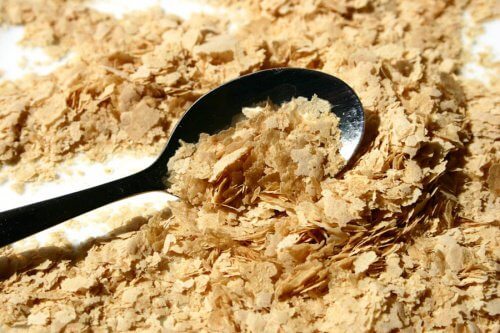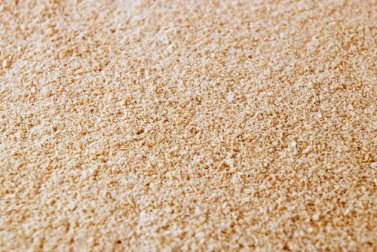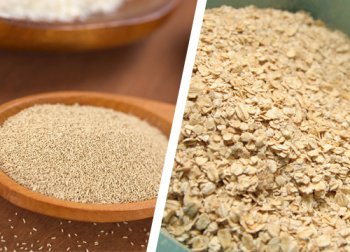The Benefits of the Brewer’s Yeast Diet

No doubt you know of brewer’s yeast or have included it in some kind of recipe before. But if you haven’t added it to your diet yet, after reading today’s article you’ll always have it on hand. Trying the brewer’s yeast diet is one of the best decisions you can make in your life.
Brewer’s yeast, a superfood
Did you know this food has one of the highest nutritional profiles in existence? Check out all the things it contains:
- 8 essential amino acids
- 10 essential amino acids for protein building
- 40% protein
- 14 minerals including selenium, chromium, zinc, copper, calcium, and iron
- 20 vitamins, the star of which is the B vitamin complex
- Nucleic acid, vital for the regeneration of cells
Who should consume brewer’s yeast?
It’s perfect for:
- Women who are pregnant or nursing
- Children during the developmental stages (especially up to seven years old)
- Teenagers
- Athletes (improves performance and provides oxygen to the muscle tissues)
- People who are dieting to lose weight
- Vegetarians and vegans (to increase protein intake)
- Older adults
- People with certain dietary deficiencies
- Those with anemia
- Diabetics
- People with hormonal imbalances (such as progesterone, thyroid hormone, or testosterone)
- Cancer patients
- People who have undergone surgery
- Those with eating disorders (bulimia, anorexia, malnutrition)
- People with liver disease
- People with high cholesterol
As you may have noticed, the brewer’s yeast diet has some kind of benefit for almost everyone, at any age or physical condition.
What is brewer’s yeast?
Brewer’s yeast is obtained during the manufacturing process of one of the world’s favorite beverages, but unlike beer, it contains no alcohol. It’s a by-product of the decomposition of barley, a dried version of the fungus known as Saccharomyces cerevisiae.
It can be grown in a lab to use it as a nutritional supplement, but most brewer’s yeasts are derived from the leftovers of the beer manufacturing process.
However, before it reaches the shelves of your favorite nutritionist shop, brewer’s yeast is cleaned to remove any bitterness, and that process robs it of some of its more beneficial compounds, meaning that the quality is a bit lower than when it has been freshly prepared during the beer-making process.

There are two types of brewer’s yeasts: the bitter and non-bitter variety, according to their preparation. Bitter yeast contains more nutrients than the non-bitter kind, for the reasons that we’ve explained above.
Taking advantage of brewer’s yeast for weight loss
It’s recommended to consume 20 to 30 grams of brewer’s yeast a day. This protein supplement, which can be found in health food or diet stores, is used by many people who are trying low calorie diets.
We also recommend:
Pay attention when you’re buying brewer’s yeast. Some stores sell three varieties, or flavors: natural, apple, and cheese. Your preference will depend on whether you want to eat it with sweet or salty foods. You can mix it in with any food you like to enrich its nutritional value (i.e., enhance its benefits).
Brewer’s yeast is usually consumed with:
- Milk
- Yogurt
- Juices
- Smoothies
- Cereals
- Vegetables
- Pasta
- Salads
- Baked goods
- Desserts
- Teas
- Meat
- Hamburgers
As you can see, the brewer’s yeast diet is very versatile.
Tips for the brewer’s yeast diet
- Be sure to only buy live, bitter yeast, and avoid anything that’s gone through a chemical cleansing process that can remove some of the most beneficial nutrients.
- Add it to your fruit and vegetable smoothies to satisfy your appetite.
- Buy yeast flakes to add to certain recipes (salads or even desserts, according to your diet). Just one small teaspoon adds protein and vitamins without any fat.
- Start your mornings by drinking brewer’s yeast dissolved in warm water and a little lemon juice. Do this on an empty stomach for two weeks in a row, and wait half an hour before eating breakfast.
- When you’re hungry, don’t raid your fridge. A better idea is to sprinkle a little yeast on some raw vegetables like cucumbers or carrots.
- Add yeast to your lunchtime salad or a hamburger patty. Just a small portion will make you feel more satisfied, and give you the energy you need to last through the day.
- Consume live brewer’s yeast in flakes or dried form three times a day (about 10 grams at a time) for at least one month to get the best results.
- Don’t forget to read the directions on the package so you know the recommended amounts to add to each food.
- Be sure to lead a healthy lifestyle. Following the brewer’s yeast diet isn’t enough – you need exercise two or three times a week, drink two liters of water every day, and avoid certain foods that are fried or contain refined sugars and flour. This will help you see the best results, and in less time.

All cited sources were thoroughly reviewed by our team to ensure their quality, reliability, currency, and validity. The bibliography of this article was considered reliable and of academic or scientific accuracy.
- Castro, E., Narváez, P. X., & Ortega, C. A. (2016). Efecto con la suplementación con levadura de cerveza (Saccharomyces cerevisiae) y promotores en la gestación y recría de cuyes (Cavia porcellus). La Granja, 25(1), 45. https://doi.org/10.17163/lgr.n25.2017.04
- Loviso, C. L., & Libkind, D. (2018). Síntesis y regulación de compuestos del aroma y el sabor derivados de la levadura en la cerveza: ésteres. Revista Argentina de Microbiologia. Asociacion Argentina de Microbiologia. https://doi.org/10.1016/j.ram.2017.11.006
- Lodolo, E. J., Kock, J. L. F., Axcell, B. C., & Brooks, M. (2008). The yeast Saccharomyces cerevisiae – The main character in beer brewing. In FEMS Yeast Research (Vol. 8, pp. 1018–1036). https://doi.org/10.1111/j.1567-1364.2008.00433.x
This text is provided for informational purposes only and does not replace consultation with a professional. If in doubt, consult your specialist.








